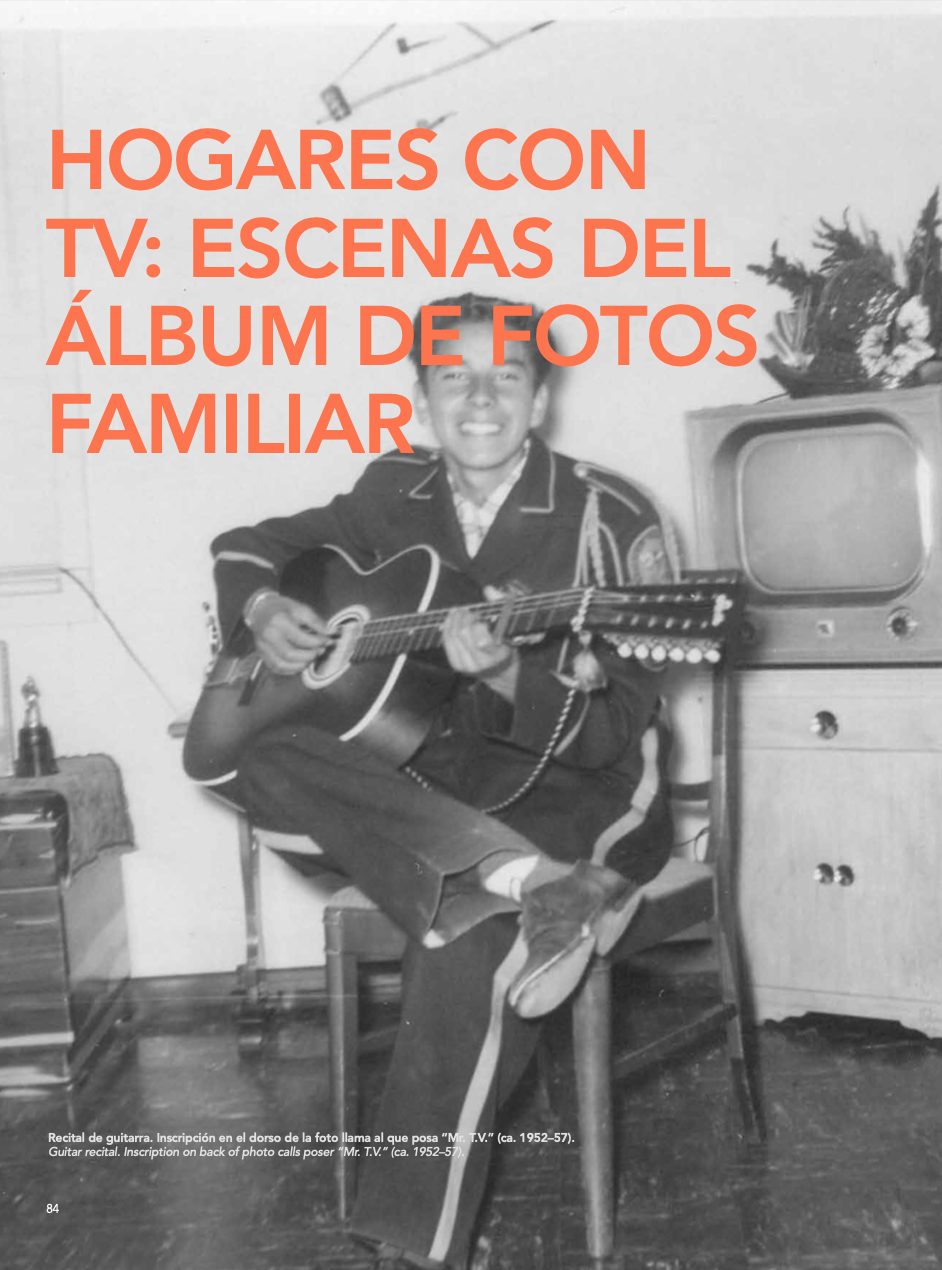HOGARES CON TV: ESCENAS DEL ÁLBUM DE FOTOS FAMILIAR
Barra lateral del artículo

Palabras clave:
Contenido principal del artículo
Resumen
Sobre la base de una coleccion de mas de 5.000 fotografis instantaneas en que figuran televisores, este ensayo explora como las personas (principalmente en los EE. UU.) visualizaron sus hogares con TV entre las decadas de 1950 y 1970. Se indaga en el uso de la TV como lugar para posar y para la presentacion de identi- dades individuales y familiares. En lugar de sencillamente limitarse a mirar la TV, las personas llevaron a caboperformances frente al televisor, transformando el aparato de TV en un espacio escenografico. El articulo con- sidera una variedad de situaciones espaciales en hogares con TV: desde espacios vacis a espacios teatrales y espacios de extranza. Se sugiere que la fotografi vernacula proporciona nueva evidencia respecto a la manera en que las personas vivieron con la TV e hicieron de sus hogares “teatros en casa”.
Detalles del artículo
Descargas
Citas
ALLEN, D. (1951). Cyclops...the Nature of a Net Household Pet. Interiors, 110(12), 62–63. BARTHES, R. (1981). Camera Lucida: Reflections on Photography (R. Howard, Trad.).
Hill & Wang.
BAZIN, A. (1967). What Is Cinema? (H. Gray, Trad.). University of California Press.
BENJAMIN, W. (1938/2006). Berlin Childhood Around 1900 (H. Eiland, Trad.). Harvard University Press.
"City of Single Women". (1959). Ebony, (Febrero), 19–24.
CVETKOVICH, A. (2003). An Archive of Feelings: Trauma, Sexuality, and Lesbian Public
Cultures. Duke University Press. https://doi.org/10.1215/9780822384434
DE CERTEAU, M. (1984). The Practice of Everyday Life (S. Rendall, Trad.). University
of California Press.
FACHEL LEAL, O. (1990). Popular Taste and Erudite Repertoire: The Place and Space of Television in Brazil. Cultural Studies, 4(1), 19–29. https://doi.org/ 10.1080/09502389000490021
FOOTE, N. (1955). Family Living as Play. Marriage and Family Living, 17(4), 296–301. https://doi.org/10.2307/346935
FOUCAULT, M. (1967/1999). Of Other Spaces: Utopias and Heterotopias. En N. Leach (Ed.), Rethinking Architecture: A Reader in Cultural Theory (pp. 350–56). Routledge.
FRIEDAN, B. (1964, 24 de enero). "Television and the Feminine Mystique," Parte 1. TV Guide, 6–11.
GILLIAN, S. F. (1912, 17 de octubre). The Future Home Theater. The Independent, 836–891.
GOFFMAN, E. (1959). The Presentation of Self in Everyday Life. Doubleday. GUNNING, T. (2010). Photography and Spirit (review). Magic, Ritual, and Witchcraft,
5(1), 127–129.
GURLEY BROWN, H. (1962). Sex and the Single Girl. Bernard Geis Associates.
HIRSCH, M. (1997). Family Frames: Photography, Narrative and Postmemory. Harvard University Press.
LEFEBVRE, H. (1991). The Production of Space (D. Nicholson-Smith, Trad.). Blackwell. MCCARTHY, A. (2001). From Screen to Site: Television’s Material Culture, and Its Place.
October, 98, 93–111. https://doi.org/10.2307/779064
MILLER, D. (2010). Stuff. Polity.
OLIN, M. (2012). Touching Photographs. The University of Chicago Press.
ROSE, G. (2010). Doing Family Photography: The Domestic, the Public and the Politics of Sentiment. Ashgate.
SONTAG, S. (1973). On Photography. Farrar, Straus, and Giroux.
SPIGEL, L. (1992). Make Room for TV: Television and the Family Ideal in Postwar
America. The University of Chicago Press.
TICHI, C. (1991). Electronic Hearth: Creating an American Television Culture. Oxford University Press.
Artículos más leídos del mismo autor/a
- Lynn Spigel, TV Homes: Scenes from the Family Photo Album , Materia Arquitectura: Núm. 20 (2020): Materia Arquitectura 20 (Diciembre/December 2020)